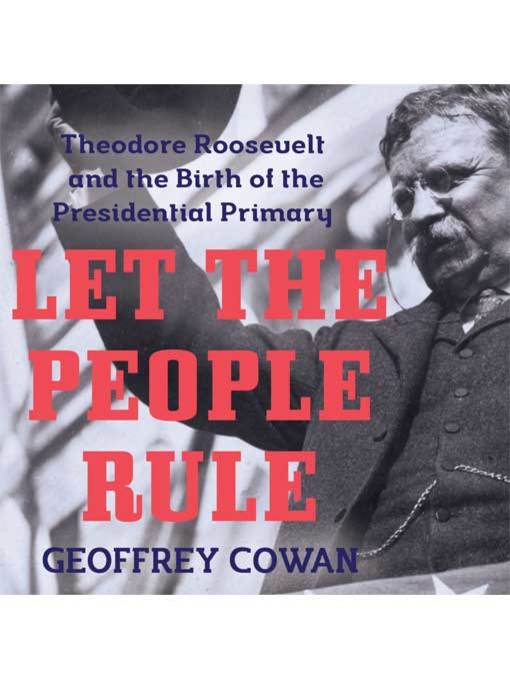
Let the People Rule
Theodore Roosevelt and the Birth of the Presidential Primary
کتاب های مرتبط
- اطلاعات
- نقد و بررسی
- دیدگاه کاربران
نقد و بررسی

The Republican Party is in chaos as it approaches its national convention, and a colorful, unpopular candidate appears to be a shoo-in for the nomination. Sound like today's headlines? Actually, this happened in 1912. With a television anchor's skill, narrator Joe Barrett explains that the unwanted candidate who split the Republican Party in two was (former) President Teddy Roosevelt. His opponent for the nomination was President William Howard Taft. In the end, Roosevelt's actions gave the election to the Democratic candidate, Woodrow Wilson. Modern-day political junkies will be shocked to learn that presidential politics were just as corrupt and complicated 100 years ago as they are today. Barrett manages to keep the dozens of real-life characters straight in this story, which shows the birth of the primary election system. M.S. Winner of AudioFile Earphones Award © AudioFile 2016, Portland, Maine

November 23, 2015
In this timely, engaging story of Teddy Roosevelt’s role in changing how political parties choose their presidential nominees, Cowan (The People v. Clarence Darrow), director of the Annenberg School’s Center on Communication Leadership and Policy at the University of Southern California, presents the 26th president as a conflicted, reluctant champion of popular democracy. Roosevelt served nearly two full terms as president (1901–9) before taking a hiatus from politics. Friends and supporters urged him to run again in 1912 to keep the Republican Party on a reformist course. However, Roosevelt’s personally groomed successor, William Howard Taft, refused to give up hopes for a second term, setting the stage for a fight at the nominating convention. Roosevelt knew he had to capitalize on his popularity, so the manner of choosing delegates and who they represented was critically important to securing the nomination. Cowan writes with a Rooseveltian verve, focusing on the political processes without losing sight of the major personalities who were involved as Roosevelt, Taft, and Robert La Follette jockeyed for the 1912 nomination. He also portrays Roosevelt as an opportunist who manipulated race and gender issues to further his candidacy. Roosevelt introduced an important change to the nominating process, but Cowan shows that it cost him and the Republicans the White House. Illus.

April 1, 2016
For better or worse, Theodore Roosevelt changed how American presidential campaigns are handled. In 1912, after retiring and selecting William Howard Taft as his successor, Roosevelt came out of retirement to challenge his old friend for the Republican nomination for the presidency. Hoping to level the playing field, Roosevelt encouraged the use of presidential primaries and won nine out of 13 races, rallying around the slogan "Let the People Decide." Roosevelt thought that he could win enough primaries and enough popular support to gain the nomination. The party bosses, who did not like his methods and who had a different agenda, blocked his nomination. Roosevelt, in turn, walked out, creating his own political party, the Bull Moose Party. Joe Barrett reads the book with relish. VERDICT A very appropriate listening choice in an election year. ["Both general readers and historians will enjoy the book's you-are-there feel because of Cowan's excellent use of primary documents": LJ 2/15/16 review of the Norton hc.]--Pam Kingsbury, Univ. of North Alabama, Florence
Copyright 2016 Library Journal, LLC Used with permission.

























دیدگاه کاربران